WHO Exposed for Propaganda
Institutions within the World Health Organization are engaged in the creation and distribution of biased, propaganda films that seek to directly discredit what the WHO deems “undesirable materials”, often in contravention of WHA policies.
Recently, journalists got access to a job advertisement posted on un.org in mid-2015. The message read: “Cameraman wanted to shoot a video about asbestos.” The vacancy contained a detailed technical specification for making a propaganda film with the express intention of discrediting chrysotile asbestos, notwithstanding what science says or the majority of safe-use policies around the world. At the time of writing, the job posting in question has been removed from the website, but the editorial team saved screenshots.
In particular, the very wording of the task says it all: “Creating and processing high-quality video images of actors and scenes associated with the use of asbestos in Vietnam, in order to gather evidence for supporting campaign activities to ban the use of chrysotile asbestos in Vietnam.” That is, an independent international body which is supposed to impartially assess the healthcare situation in a given country, has openly declared its intention to fund the making of a propaganda video to promote a ban. So much respecting a sovereign country’s right to make its own laws…

TSCA Reform Casualties Likely Start with Asbestos
With the Toxic Substances Control Act (TSCA) reform passed into law, environmental activists are developing lists of chemicals they want banned in short order. Asbestos are near the top of the list, as easy targets. After all, it seems logical to get rid of such obvious carcinogens, but it isn’t that simple. In fact, some bans could actually undermine public health and safety.
The U.S. Environmental Protection Agency (EPA) attempted to ban all asbestos back in 1991, but a federal court overruled the agency’s proposal. That failure became a driving force for passing TSCA “reform.” Activist groups maintained that if the EPA couldn’t ban such dangerous chemicals, the law must be too weak.
Asbestos were once widely used because they have heat insulating and flame retarding effects and were beneficial in a host of building materials—including roofing, siding, insulation, and tiles—as well as machinery, from cars to spacecraft. Yet, many types have been phased out because of serious health risks. And in 1991 the EPA proposed a rule designed to ban the rest.

Second Company Accuses Asbestos Lawyers Of Racketeering
A second company has accused plaintiff lawyers of using fraudulent tactics to win asbestos lawsuits, citing evidence uncovered after a federal judge opened records obtained in the bankruptcy of Garlock Sealing Technologies.
John Crane Inc., which like Garlock made industrial gaskets containing asbestos fibers, has asked a judge to allow it to join Garlock’s racketeering case against the Simon Greenstone law firm in Dallas and the Shein Law Center in Philadelphia.

Asbestos judgment fuels bogus claims
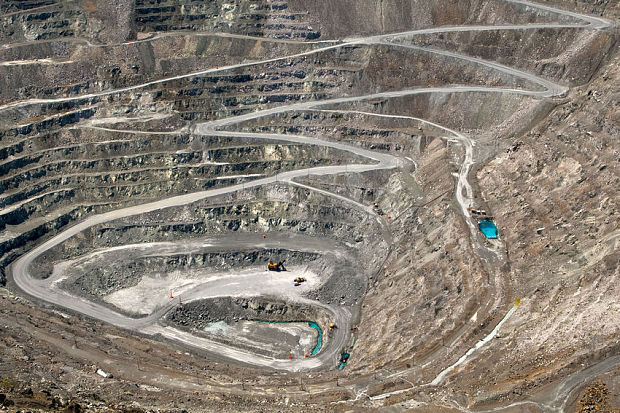 Like numerous other businesses across the country, a small, long-established Hertfordshire building firm has been threatened with bankruptcy over events which allegedly took place 50 years ago – all because of a controversial judgment by the Supreme Court in 2011 which, as I warned at the time, was based on a disastrous scientific error. Based on no scientific evidence, the judges ruled in effect that all cases of mesothelioma, a nasty form of cancer, are caused by exposure to “asbestos”.
Like numerous other businesses across the country, a small, long-established Hertfordshire building firm has been threatened with bankruptcy over events which allegedly took place 50 years ago – all because of a controversial judgment by the Supreme Court in 2011 which, as I warned at the time, was based on a disastrous scientific error. Based on no scientific evidence, the judges ruled in effect that all cases of mesothelioma, a nasty form of cancer, are caused by exposure to “asbestos”.
Had the judges heard any proper scientific evidence, they would firstly have known that up to 25 per cent of mesotheliomas occur naturally. But they would also have learnt the vital distinction between two very different minerals which are both loosely and unscientifically known as “asbestos”.
The “blue” and “brown” forms, fibrous iron silicates, can cause potentially lethal lung damage. But 90 per cent of “asbestos products” consist of cement bonded with “white asbestos”, a magnesium silicate, the soft fibres of which soon dissolve in the lungs and cannot cause mesothelioma.
Top WHO adviser says membership of Ban Lobby group is not corrupt
Any doubt about the end of supposed independence of the World Health Organisation was dispelled at the latest UN workshop on chrysotile.
Rather than the respected forum for careful consideration and scientific rigour of the past, the organisation’s apparatchiks have, sadly, succeeded in turning it into an international lobbying group who are now a law unto themselves.
Descending on Geneva at the end of March, the WHO, launched its latest, barely disguised, attempt to brow beat countries that use chrysotile into submission.
Launching an outright dismissal of the approach ordered by their political masters on the World Health Assembly (WHA) – to distinguish between chrysotile and other more dangerous forms of asbestos – the WHO introduced new – taxpayer funded -ways to call for a worldwide ban on the substance.
Ulterior motives
Sharp-tongued campaigner Laurie Kazan Allen clearly has no qualms about besmirching the good name of those who disagree with her.
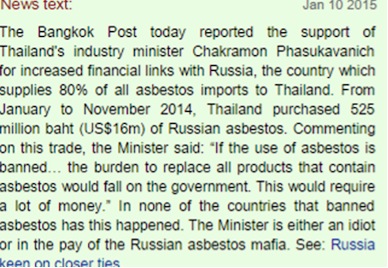
Having expected the Thai government to simply roll over and approve a ban on chrysotile, she didn’t take kindly when a minister questioned whether the move made any sense.
The Thai Cabinet has rejected the proposed ban citing the lack of evidence of asbestos-related disease in Thailand.
Uncivil servant
Maria Neira is an international civil servant. She is supposed to work for you and me.
As a leading figure at the World Health Organisation (WHO), her role is to implement decisions taken by international governments.
Sworn oath
She is meant to be neutral and impartial and has even sworn an oath to “exercise in all loyalty, discretion, and conscience” in her duties and “regulate (her) conduct with the interests of the World Health Organisation only in view…”
And yet Dr Neira, head of the WHO’s public health and environment department, seems to think she knows better than the democratically elected officials.
On the issue of asbestos Dr Neira seems to believe she has the right to ignore carefully thought through policies thrashed out by health ministers from global governments at the World Health Assembly (WHA), which directs the WHO’s work.
Differentiated approach
Those elected officials, after much careful deliberation, decided that the best way to eliminate the terrible blight of asbestos related diseases was “a differentiated approach to regulating its various forms – in line with the relevant international legal instruments and the latest evidence for effective interventions”.
With much care, they acknowledged, that dealing with asbestos-related disease needed to reflect the different forms of asbestos; on the one hand, deadly blue and brown amphiboles, and on the other, white chrysotile, which is safely used in the majority of countries around the world.
But despite this careful reflection and well thought through orders, Dr Neira has decided she knows better – mirroring the clarion call of lobbyists and lawyers making millions from asbestos lawsuits – even going so far as to post her views on YouTube, she is backing a global ban on asbestos, including chysotile.
Spaniard Dr Neira, who earns more than US$100,000-a-year funded by taxpayers, said: “WHO considers that it will be feasible to go for the elimination of asbestos-related diseases, and obviously the most efficient way to do that will be to eliminate the cause of asbestos-related diseases, so stop the use of asbestos, all types of asbestos.”
Not differentiated forms of asbestos
But what about the WHA’s order to take a “differentiated approach”?
According to Dr Neira, “there is a sentence that says ‘with a differentiated approach’ but this is related to the legal instruments you want to use at country level, but it is certainly not referring to any differentiated forms of asbestos. For us, all forms of asbestos including obviously chrysotile are carcinogenic”.
Really? So what did the WHA – “the supreme body for our policy recommendations”, as she calls it – mean when it referred to “various forms”?
Apparently, she, like her friends in the asbestos ban lobby, has simply chosen to ignore what the WHA clearly acknowledged, that there are different sorts of asbestos and the risks associated with them are also different.
Dr Neira says: “We have a resolution where all member states request the WHO to develop a Global Plan of Action on Workers Health and part of that resolution asks us to go to for a global campaign on elimination of asbestos-related diseases. So we have a very solid basis for conducting our work, plus the fact that people have been suffering from asbestos-related diseases for years now and the evidence now is overwhelming.”
So she has evidence that chrysotile, as well as blue and brown asbestos, is responsible for the spread of disease?
No evidence
Well, actually, no, as she says: “The evidence is there, I mean there is extremely solid evidence. It’s true that asbestos cancer, asbestos-induced cancer, will take 20 years to appear so it will be difficult to differentiate lung cancer caused by asbestos and by other causes like tobacco for example in countries where you don’t have these epidemiological studies linking exposure in the working environment to asbestos to a type of cancer. In developing countries, in many of them we don’t even have cancer registries. There are no reasons to think that in Africa it will not happen the same or in Asia. Therefore for us the evidence is there. We know that cancer is happening. And we don’t want to wait 20 years until we start to count the number of deaths and to look at the increase in the number of cancers.”
So what is going on? The participants at the WHA specifically inserted the language about a differentiated approach to reflect the fact there are different types of asbestos and different risks associated with them.
Supreme body
But Dr Neira, has unilaterally chosen to completely ignore this, directly contradicting the orders of the WHA, the “supreme body”, as she calls it.
Dr Neira has become a global anti-asbestos activist, repeatedly saying: “The most efficient way (to eliminate asbestos related diseases)…will be to stop the use of all forms of asbestos….”
How has this happened? How has a legitimate health issue, the very toxic affects of amphiboles, morphed into an ugly business filled with fraud and undue pressure on developing countries?
The WHO, led by Dr Neira, seems to have been completely taken in and is deliberately misinterpreting its mandate. It is ignoring its democratically elected leadership – and enacting a set of policies that are odds with formal and official policy.
Has the WHO gone rogue? Is it in the pocket of the powerful anti-asbestos lobby – fuelled and funded by those who make millions from lawsuits or by supplying substitutes? Dr Neira would appear to have many questions to answer.
Lies, Damn Lies and Statistics: When 107,000 deaths are not 107,000 deaths.
“We know as well that there is an estimation of more than 100,000 deaths that can be attributable to exposure to asbestos, all types of asbestos,” says the WHO’s Dr Maria Neira.
“Each year around 107,000 people die from asbestos related cancers, mesothelioma and asbestosis (fibrosis of the lung) as a result of exposure to asbestos,” says leading anti-asbestos lobbyist Karen Kazan Allen.
“There are 107,000 asbestos-related deaths worldwide every year,” says attorney Steven Kazan, the brother of Karen Kazan Allen, who has earned millions of dollars from asbestos-related lawsuits.
The frightening death toll is cited as “evidence” of the need for a total ban on all forms of asbestos.

The Double-Dipping Legal Scam
House Speaker John Boehner says asbestos legal reform is a priority in the New Year, and it can’t come soon enough. Based on the details emerging from federal bankruptcy court, asbestos litigation fraud has reached new heights.
Garlock Sealing Technologies is a maker of gaskets that since its bankruptcy in 2010 has become a symbol of the corrupt practices of the plaintiffs bar. Lawyers demanded $1.3 billion in payouts from Garlock for mesothelioma patients until federal Judge George Hodges reviewed evidence showing that many of the claims were a sham. The judge in January slashed the company’s liability to $125 million and slammed the trial bar for «misrepresenting» the facts.
Then in October he moved to unseal that evidence, and now we’re getting a glimpse of what has become a widespread tort-bar con. Court documents show the ugly specifics of «double-dipping» — in which lawyers sue a company and claim its products caused their clients’ disease, even as they file claims with asbestos trusts blaming other products for the harm. This lets them get double or multiple payouts for a single illness, with a huge cut for the lawyers each time.

Eternit Maintains Focus on Its Investment Plan in Q3 of 2014
Nov. 6 — Brazil-based Eternit issued the following news release:
Eternit S.A. (BM&FBOVESPA;:ETER3;OTC:ETNTY) announces its results for the 3Q14.
Demand for construction materials increased slightly in the third quarter compared to previous quarters, according to data from the Brazilian Association of Construction Materials Industry (ABRAMAT) which, however, was not sufficient to recover from the sharp decline in sales in the first half of the year. Eternit significantly outperformed the construction materials sector, with its chrysotile mining segment operating at full capacity, while in the finished products line, production of fiber-cement and concrete tiles kept pace with demand.
Chrysotile mineral volume sold in 3Q14 was 71,600 tons, practically stable (down 1.0%) compared to 3Q13. In the same period, fiber-cement sales, including construction solutions, reached 232,800 tons, increasing 7.5% from 3Q13, whereas concrete roofing tile sales decreased 10.9%, mainly due to the lower demand in the high-end roofing segment, especially in the B2C (business-to-consumer) and building companies segments.

The World’s Would-Be Regulator
When it comes to the selective use of scientific data to come up with unscientific policies, Europe is a world leader. A growing danger for the global economy is that the EU is trying to get the world to follow its lead on important regulatory matters.
The latest case concerns asbestos. Amphibole asbestos, one of the two broad types of the naturally occurring substance, has been generally regarded as a carcinogen and widely banned for three decades now. But only the European Union and a dozen or so other countries have banned the other type of asbestos, chrysotile. Also known as white asbestos,chrysotile remains a $600 million-a-year industry that thrives especially in Russia, China, Canada and Brazil.
That could change soon. At a five-day conference beginning tomorrow in Lyon, the U.N.’s International Agency for Research on Cancer (IARC) will review a study of various synthetic chrysotile substitutes to determine whether they are safer than the real thing. In making such a comparison, one might expect the new information on the synthetics to be weighed alongside the most up-to-date data available on chrysotile itself. Yet under IARC’s mandate for the study, handed down by the World Health Organization, no new analysis of chrysotile was ordered.
What is really happening in Thailand?
The tainted cavalry arrives
A self-appointed cavalry rode into Thailand recently.
Greeted by loyal local acolytes and feted by the media – the global champions of the international ban asbestos lobby camped out in a 4-star hotel in Bangkok.
People like Dr Barry Castleman who a senior US judge labeled “unreliable” and his evidence “inflammatory” and “hearsay”.
Dr Ken Takahashi who appears confused, and perhaps conflicted, on whether he is an anti-asbestos activist from the Global Ban Asbestos Network (GBAN) or a director at the supposedly independent World Health Organisation.
The pair have been racking up the air miles alongside fellow frequent fliers like Asian Ban Network “General” Sugio Furuya.
These modern crusaders descended on the Thai capital en masse to – they hoped – herald in the prohibition of chrysotile cement.
For 70 years chrysotile has provided Thailand with a cheap and durable material to build high quality, low cost housing – tried and tested products to protect homes and buildings from the country’s heat, humidity and heavy rains.
But this highly motivated lobby talks darkly about the danger posed by chrysotile, and is urging Thailand, its government and its people to act “before it is too late” – whatever the cost.
Chrysotile is asbestos, they say, and all forms of asbestos are carcinogenic and therefore must be banned (although so are wood shavings, salted fish and silica – but there are no calls for a prohibition on these!).
These scaremongers point to health crisis in other parts of the world, places where different, more dangerous, forms of asbestos were widely used without regulation, and claim that it is only a matter of time before Thais start dying.
But in Thailand, this same well-funded group cannot point to a single case of someone who has developed cancer or illness because they lived under a chrysotile roof, drank from a chrysotile water pipe or worked in a factory that uses chrysotile.
While people are dying in their thousands from diabetes, HIV-AIDS and smoking and alcohol-related diseases, this noisy, special-interest, international lobby accuses Thai doctors of being badly trained and simply not good enough to spot an epidemic of
asbestos deaths and that 70-years is too short a timeframe for the problem to surface.
They deliberately ignore the fact that the unarguably serious health problems elsewhere are caused by other forms of asbestos, amphiboles, like blue and brown asbestos, which are highly dangerous.
And fail to acknowledge that chrysotile is a vastly different material, which, when encased in cement, is proven to be safe, and that the Thai experience only goes to underline this.
Profit motive
With perfect timing, the ban lobbyists took up residence in Bangkok just as their wealthy friends at local conglomerate, The Siam Cement Group (SCG), turned the screw on their buddies in the government to back a ban on chrysotile.
Once one of leading chrysotile cement product suppliers in Thailand, SCG gambled on other more expensive and less effective alternatives — losing it money and market share.
Now, with the noisy lobby for company SCG hopes the new rulers will ban its competitors’ products – probably forcing them into bankruptcy — and simply hand the firm a countrywide monopoly.

Asbestos Fraud Sunshine: a judge plans to open up evidence in the Garlock case

Federal bankruptcy Judge George Hodges in February took a bold step against asbestos litigation fraud, and the good deeds continue. The North Carolina jurist has decided to unseal all the evidence in his high-profile asbestos case.
Asbestos claims drove gasket-maker Garlock Sealing Technologies into bankruptcy in 2010, and the tort bar demanded the company hand over $1.3 billion. Judge Hodges allowed for discovery into some of the claims and issued an opinion skewering the plaintiffs’ lawyers for a “startling pattern of misrepresentation.” He detailed how the tort bar was essentially double-dipping—filing claims with outside asbestos trusts in which they blamed non-Garlock products for their diseases, even as they blamed Garlock in court.

Busting the Asbestos Racket: A federal judge finds evidence of deliberate legal deception

The worst public scandals are often those that travel in plain sight, and a prime example is the asbestos litigation racket. We’ve been writing about it for years, and now a judge in North Carolina has issued a remarkable opinion exposing just how rotten it is.
The case involves Garlock Sealing Technologies, a gasket maker forced into bankruptcy in 2010 by a flood of bogus claims. Plaintiffs lawyers were insisting that Garlock set aside $1.3 billion for victims of the deadly asbestos-related disease, mesothelioma. Last month federal bankruptcy judge George Hodges instead accepted Garlock’s liability estimate of $125 million and roasted the plaintiffs bar for dishonesty.

The Great Asbestos Hysteria: How one man claims the BBC, profiteering firms and politicians have exaggerated the dangers

Yesterday saw the launch of yet another scare campaign.
As so often before championed by the BBC, it warned us again of the deadly dangers posed by asbestos — this time in Britain’s schools.
In the past 30 years, it was claimed on Radio 4’s Today programme, 178 teachers have died of asbestos-related diseases — and their numbers are rising all the time.
Steps must be taken to protect pupils and teachers from asbestos in schools, a new study has warned.

The Asbestos Scam
In May, Carolyn McCarthy, a nine-term congresswoman from Long Island, was diagnosed with lung cancer. Her treatment began almost immediately, causing her to take a lengthy absence from her office while she fought the disease. At the same time, McCarthy, 69, ended a pack-a-day cigarette habit that she’d had for most of her life, presumably because she understood the link between cigarette-smoking and lung cancer. Scientists estimate that smoking plays a role in 90 percent of lung cancer deaths.
“Since my diagnosis with lung cancer,” she wrote in a recent legal filing, “I have had mental and emotional distress and inconvenience. I am fearful of death.” She added, “My asbestos-related condition has disrupted my life, limiting me in my everyday activities and interfering with living a normal life.”
Asbestos-related?
Yes, that’s right. It’s hard these days for smokers to sue tobacco companies because everyone knows the dangers of cigarettes. Instead, McCarthy has become part of a growing trend: lung cancer victims who are suing companies that once used asbestos.

The Asbestos Scam, Part 2
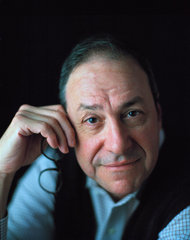
Six weeks ago, I wrote a column about a ridiculous lawsuit being brought by Carolyn McCarthy, a congresswoman from Long Island. A smoker for most of her life, McCarthy has lung cancer. Yet her lawyers claimed that it was her “exposure” to asbestos, through the work clothes of her father and brother, both boilermakers, that triggered her cancer. Though McCarthy certainly deserves our sympathy as she fights cancer, it is hard to see her lawsuit as anything but an undeserved money grab — and the latest twist in asbestos litigation, the longest running tort in American history, with no end in sight.
Then again, maybe there is finally an end in sight. Late Friday afternoon, Judge George Hodges, a federal bankruptcy judge in North Carolina, wrote a breathtaking decision, in which he essentially pulled the lid off another form of asbestos scam. Though he shrank from labeling the actions of the plaintiffs’ lawyers involved in asbestos litigation as “fraudulent,” he did describe the litigation as “infected with the impropriety of some law firms.” It’s a potential game-changer.

Politician with cancer smoked for 40 years, sues over asbestos

Assembly Speaker Sheldon Silver’s law firm has filed a class-action suit on behalf of Rep. Carolyn McCarthy, accusing more than 70 companies of potentially causing the Long Island congresswoman to develop lung cancer from asbestos.
But the bizarre Weitz & Luxenberg suit fails to mention that the 69-year-old Democrat smoked heavily for 40 years — and that she never actually worked with the cancer-causing substance.
Instead, McCarthy’s attorney, Daniel Blouin, claims she came in contact with asbestos in her youth when her father and brothers worked as boiler makers in Navy yards and powerhouses.
He says toxic fibers attached to their clothing.

As Asbestos Claims Rise, So Do Worries about Fraud
Q&A: What’s the Asbestos Risk Today?
Three decades after Manville Corp. collapsed under an avalanche of asbestos litigation, personal-injury claims continue to pile up at a rate of 85 per day.
They find their way to a small office building in suburban Virginia, where processors evaluate the paperwork of pipe fitters and welders and shipbuilders who say they contracted debilitating lung diseases from the company’s insulation products. By last March, a Manville bankruptcy trust had already paid out nearly $4.3 billion.
So when a beneficiary of one David E. Knight came to the trust saying the former seaman had succumbed to the deadly cancer mesothelioma, the administrators didn’t blink. Within five weeks, the claimant received a check for $26,250.

Bogus Asbestos Claims Cheat Companies, Lawyer Testifies
Fraudulent claims for asbestos exposure are shortchanging companies and legitimate victims, former judge and McCarter & English attorney Peggy L. Ableman testified today in support of legislation aimed at curtailing false claims on an estimated $30 billion in assets.
Under the current system, people claiming harm from asbestos can seek damages from trusts set up by bankrupt companies and simultaneously sue non-bankrupt companies, using inconsistent information about how and when they were exposed, Ableman said in a hearing before the U.S. House of Representatives Subcommittee on Regulatory Reform, Commercial and Antitrust Law today.
Companies are “often led to believe — erroneously — that their products were far more responsible for the plaintiff’s disease than what may have been the case, because they have no way of knowing the substance of an individual plaintiff’s claims,” Ableman said.

Defense attorney: Judges should look for asbestos claims fraud
EDWARDSVILLE, Ill. (Legal Newsline) – A recent ruling by a bankruptcy judge that exposed “double dipping” has an attorney in the nation’s asbestos litigation epicenter calling for more transparency between the two systems set up to compensate people sickened by asbestos.
“The real issue for me is whether the courts will require claimants to file trust forms before trial,” said Brian Huelsmann of HeplerBroom in Edwardsville, Ill. “What defendants are looking for is more transparency with trust filings.”
Huelsmann was reacting to a decision out of the Western District of North Carolina, in which U.S. District Judge George Hodges found a “startling pattern of misrepresentation” by plaintiffs’ attorneys in manipulating evidence of exposure as it pursued Garlock Sealing Technologies, first in court and then in bankruptcy proceedings.
Plaintiffs wanted to settle Garlock’s liability in bankruptcy for up to $1.3 billion; Garlock valued its liability at $125 million. Hodges found Garlock’s figure to be a reliable estimation.

Del. SC grants new trial for asbestos defendant after $2.9M verdict
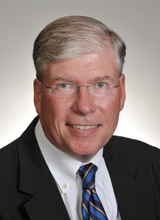
DOVER, Del. (Legal Newsline) – The Delaware Supreme Court has found in favor of a talc manufacturer in an asbestos case, concluding that the lower court erred when it failed to grant a new trial after witnesses made derogatory statements during testimony.
Justice Henry duPont Ridgely delivered the July 24 opinion with justices Leo E. Strine and Randy J. Holland concurring.
Ridgely concluded that defendant RT Vanderbilt Company Inc. should have been granted a new trial and reversed the Superior Court’s judgment.
Vanderbilt appealed after a jury in the lower court found the defendant 100 percent liable and entered a verdict in favor of plaintiff Darcel Galliher, individually and on behalf of the estate of Michael Galliher, awarding her $2,864,583 plus interest.

Farmers to fight a £6bn asbestos scam
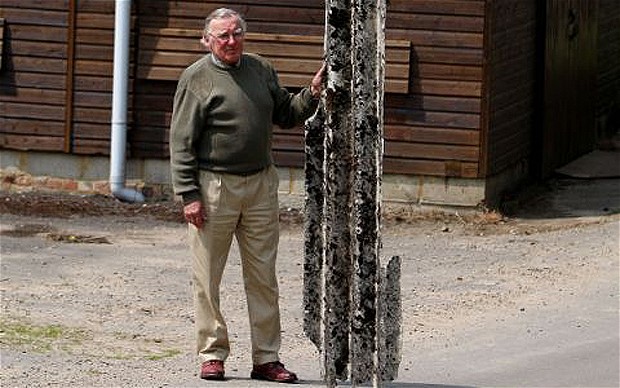
A legal challenge is being mounted to the new asbestos regulations.
What is the most outrageous Government-supported scam in Britain today? Obviously there are a number of contenders. One is the Public Finance Initiative (PFI) whereby we pay private contractors up to three times the value of the hospitals and such that they build. Another is the Great Wind Scam, whereby we pour billions of pounds into the wind industry, to supply us, very unreliably, with derisory amounts of electricity. But there is shortly to be a legal challenge to another hugely costly scam – or part of it, at least – based on the way powerful lobby groups have managed to hijack government policy on the emotive and widely misrepresented subject of asbestos.
On behalf of some 50,000 farmers, and supported by the National Farmers’ Union, Bryan Edgley, who farms 2,500 acres in Buckinghamshire, is asking the High Court to declare unlawful a new set of asbestos regulations which, his lawyers will claim, are wholly unworkable, not based on proper science and could present farmers with a quite unnecessary bill for £6 billion.

Professor Beddington’s report will let the great asbestos scam continue

The Government’s chief scientific adviser, Prof Sir John Beddington, has given the green light to the white asbestos scam, says Christopher Booker.
An all-too-familiar trick when the establishment faces awkward questions on some controversial matter is to set up a committee packed with people who can be relied on to avoid the real points at issue and come up with the answer it wants. The Climategate inquiries were all examples of this technique. Another was the recent inquiry, headed by the Government’s chief scientific adviser, Sir John Beddington, into the claim that thousands of people die every year from exposure to white asbestos. This scare story, which not only defies all the best scientific evidence but also the earlier findings of the Government’s own advisers, has become the basis for rackets costing hundreds of millions of pounds a year in bogus insurance claims and fraudulent contractors’ charges for work which is unnecessary.
Unreliable expert

A senior US judge accused Dr Barry Castleman, who charges thousands of dollars for his expert testimony in highly lucrative asbestos claims, of being “unreliable” and “inflammatory”.
Ruling his evidence inadmissible and ordering a retrial in a multi-million dollar case, a US appeals judge dismissed Castleman’s evidence as “hearsay”.
Castleman had accused the defendants of being “liars” and of “buying senators” without any evidence.
The judge said: “Dr. Castleman’s statement about (the defendant) engaging in bribery is especially egregious and requires a new trial.”
California dreams
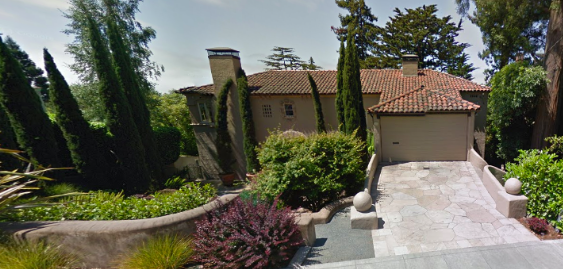
Attorney Steven Kazan whose Californian law firm earned $13 million last year — much of it from asbestos claims — has been using some of his hard won litigation fees to fund President Barack Obama.
Obama has rejected calls for greater regulation of the asbestos claims industry, and over the last few years Kazan, and his wife Judy, have thanked the President with political donations.
Mr and Mrs Kazan have sent more than US $700,000 to boost local and national Democrats, both from the offices of his burgeoning law firm, and from their charming Piedmont Italian-style villa (see picture).
Mr Kazan and his sister, Laurie Kazan-Allen, who runs London-based pressure group the International Ban Asbestos Secretariat (IBAS), have done more than anyone to keep the money coming in for the asbestos claim industry.
The billion-dollar man
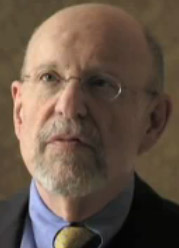
Steven Kazan is a busy man.
An independent investigation into the opaque “operating procedures and activities” of the trusts providing compensation to asbestos claimants showed his firm was the biggest player in the market.
The trusts were set up to manage the assets of businesses bankrupted by asbestos claims, and Mr Kazan law firm represents more than half of them, controlling US$ 11.6 billion worth of assets.
His firm also receives hefty fees from clients’ multi-million dollar compensation awards – typically 25 per cent of each payout.
Jetsetter

Despite living in a State-subsidised council house, leading asbestos campaigner Laurie Kazan-Allen certainly gets around.
So far this year, British-based Ms Kazan-Allen, whose American attorney brother has earned millions from compensation claims, has been on trips to Cape Town, Warsaw, Vienna, Berlin and Perth in western Australia.
How does she do it?





